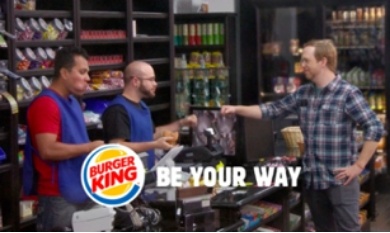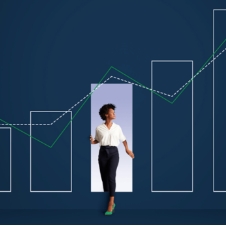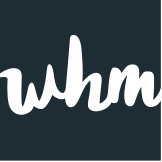Is That Your
Best Line?
Creating and using taglines that
get your brand noticed
What’s with attention spans these days? If your message doesn’t fit on a hat or in a tweet, people probably won’t listen. And if they do, chances are you’ll be forgotten faster than…what was I saying?
It’s fun to blame smartphones, social media, and millennials for our shrinking ability to stay engaged. But this craving for the curt and memorable is actually nothing new. Remember the brand behind “Good Till the Last Drop”? How about “99 44/100% pure”? One of the oldest taglines, it has appeared on Ivory soap ads since 1882 and is still used today.
If you want sticking power, the answer is simple: People recall things they connect with emotionally (there’s tons of science1 to prove it). But getting there is a little complicated.
Still reading?
Great! Grab a cup of Maxwell House and let’s unpack the tagline mystique together.
01
Know the lingo
Tagline 2 first appeared in nomenclature back in 1926, when it described something that “clarifies a point or creates a dramatic effect”—like the punchline of a joke. Today, it refers to a “reiterated phrase identified with an individual, group, or product.” Taglines are sometimes called catchphrases or slogans (or straplines if you’re in the UK).
- Example: “The Quicker Picker Upper”
Crafted in the mid-’60s, the tagline for Bounty still appears on their packaging. This short, descriptive, poetic line is so successful, it’s practically a nickname for the well-known paper towel brand.
Campaign lines are like taglines, but instead of speaking to the brand as a whole, they’re written for a specific campaign.
- Example: “Where’s the Beef?”
Back in the ’80s, competition among burger chains was extra fierce. The Whopper and Big Mac dominated, even though Wendy’s served up a bigger single-patty burger. Wendy’s needed a meaty campaign line to get them noticed—and eaten. “Where’s the Beef?” not only caught on like a grease fire, it’s since been adopted into the vernacular as a way to question the substance of an idea.
02
Know the scope
When do you need a tagline vs. a campaign line? It’s all a matter of time:
- Taglines are like marathons: they’re meant to be used for the long haul
They have a wider scope and take in the full picture: what a brand is, what it stands for, and what its points of differentiation are. - Campaign lines are like sprints: written for shorter-term campaigns
They have a narrower scope, take the current marketplace into account, and pack a focused punch. One great thing about campaign lines is that they’re a lot easier to swap out.
But avoid these pitfalls:
- Multiple lines at once
Let’s say your brand has a killer tagline, and you’re about to run a new campaign with its own line. Should you use both on your marketing materials at the same time?No.Why? As with any messaging you put out into the world, you want to leave consumers with a clear takeaway. Competing lines will cause confusion, muddle your message, and even degrade the power of the individual lines. You know that fancy equation where 1 + 1 = 3? Imagine the opposite of that to the power of nope.
- Using it everywhere
Whether it’s a tagline or campaign line, it doesn’t matter how much you love it—if it doesn’t fit, it’s gotta go. Banner ads are a great example: That 250×300 pixel plot simply cannot fit a headline, call to action, AND your slogan (but you could include it on whatever that banner drives to). Knowing the primary purpose of the piece will help you decide what elements are a must—and what gets cut.
03
Work with an experienced partner
There are some award-winning taglines out there—but there are some serious stinkers too. Take the 2014 tagline refresh for Burger King:

TIP:
If your line will appear in other countries, think about how well it might translate.
Grammatical weirdness aside, this attempt to connect emotionally with customers feels more like a direct order than the friendlier “Have it your way” invitation. More “punch in the face” and less fistbump.
The key to making sure your tagline works for (not against) your brand is to enlist an outsider’s perspective. Working with the right agency partner to craft the best possible tagline will help you:
- Know your brand better.
What are your attributes? What does your brand represent? Through research and strategy workshops, an agency can get to the heart of your brand—and help rediscover both who you are and where you should be. Brands with a high awareness have a lot more creative freedom when it comes to their tagline. Lesser-known brands should use their tagline to help explain who or what they are. - Know your audience.
How do they perceive you? Why should they choose you? What can your brand do for them? Get to know their desires and pain points. - Know the competitive landscape.
What are your competitors saying? How does your brand compare with others in your category? If you’re going to differentiate yourself, it’s critical to know what you’re up against.
The better you know your brand, the better your line will be at connecting with consumers and getting them to remember you.
Why choose WHM?
Whether you need to boost brand awareness or add some punch to all the techie details of what your products do, we can help. Crafting simple, successful taglines (and campaign lines) is some of the work we love to do.

Take Qlik, for example. They came to us for help reintroducing their brand to the world. To elevate them, we wrote the tagline “Lead with data”—highlighting not only their leadership within the category, but also what their clients can do with Qlik in their corner. Getting “data” in there was critical, as “Qlik” doesn’t directly explain what they do. View the work we did for Qlik here.

For PRC—a nonprofit that provides help for people struggling to overcome substance abuse and mental health issues—we did branding work including writing a tagline for them that got to the heart of how they help: “We move people forward.” View the case study here.
